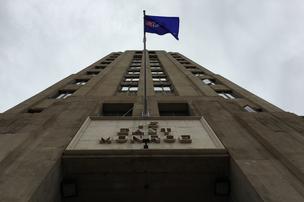Replace your incandescent light bulbs with fluorescent or CFLs. Doing so greatly reduces the energy consumed to light your home.
Open the windows on nice days to save on energy. This will give your heating and air conditioning systems a break, as well as let you air out your house.
In the cooler months, turn down the heat and wear long sleeves, pants and socks during the day. Also set your thermostat at a lower temperature while you’re sleeping. Wearing extra clothing or throwing another blanket on the bed will be worth it when you see a drop in your utility bills.
Have your heating and cooling systems serviced every year. Consider having your air conditioning system checked in the spring and your heating system serviced in the early fall. While you could save money by having both done at the same time, one will sit idle and unused for many months and may require additional servicing. Therefore, doing them separately may be more practical and save you money in the long run. Also, make sure filters are replaced regularly to keep your systems running effectively and efficiently.
Use high performance windows, screens and window films in your home. Not only will this help eliminate hot spots, it will also cut back on damage to wood furniture, artwork, and upholstery from UV rays. Also, high performance windows can cut back on the need to use your air conditioner.
Money Saving Energy TipsMake sure your attic is properly insulated. This will keep the house warmer in winter and cooler in the summer. You should also be sure that the attic has proper ventilation to allow for adequate and natural airflow. According to the US Department of Energy, you can save up to 30 percent on heating and cooling costs by being sure your home is properly insulated.
There are many appliances and electronics that use energy even when they are not in use. This can be avoided by unplugging appliances when no one is using them. Some of the worst culprits are toasters, computer monitors, TVs, DVD players and microwaves. One way to keep from having to plug in and unplug these every day is to plug them into power strips. By using power strips, you can cut off the power to many of them at once with the flip of a single switch.
If your refrigerator has a power save switch, use it. Also, set your refrigerator temperature between 30 and 42 degrees. There’s really no need to set it any lower and doing so will only waste energy.
If you feel cold air or moisture around your refrigerator door, you need to repair the door seals. It’s not that difficult a task and every major hardware store has door seal repair kits. Doing so will help your refrigerator keep foods cooler while using less energy.
Dust your refrigerator and keep the coils cleaned by using a vacuum or a duster.
A full freezer uses less energy than an empty one, so try to keep it well stocked. Another option is to fill your freezer with old milk jugs filled with water.
Look for the Energy Star ratings when purchasing new appliances. The savings from these will be noticed quickly. Many federal and state tax credits and rebates are available for replacing your old appliances with newer, more energy efficient ones.
Energy Costs Got You Down? The next time you’re looking to purchase a computer, consider a laptop. Laptops use less energy than regular desktop models. Speaking of computers, set your computer to sleep mode instead of using a screen saver. This will help you to save on electricity when it’s not in use.
If you use battery chargers, make sure you unplug them once the batteries have a full charge.
When you’re doing laundry, wash and dry several loads at a time that way your dryer will still be warm when you change loads over and it will take less energy to heat it up.
Don’t over dry your clothing. Not only is this hard on your fabrics, but it also uses unnecessary energy. Many items can be dried until slightly damp and then hung up to dry.
When possible, wash full loads of clothing. If you need to wash less clothes in one load, make sure you adjust the water setting accordingly.
Consider hanging your clothes to dry outside on a line when weather permits. If this is not possible, you may also be able to air dry some items on a line inside, perhaps in the attic.
Whether you make large investments or use simple measures to make your home more energy efficient, your energy bills are sure to decrease when you follow the above tips. If you do decide to make a larger investment in becoming more energy efficient, the savings you reap will, in the long run, pay for the cost of any improvements you make. Not only will an energy efficient home help keep you and your family more comfortable and save money, in the future if you should decide to sell your home, the improvements you have made will make it more attractive to potential buyers.






